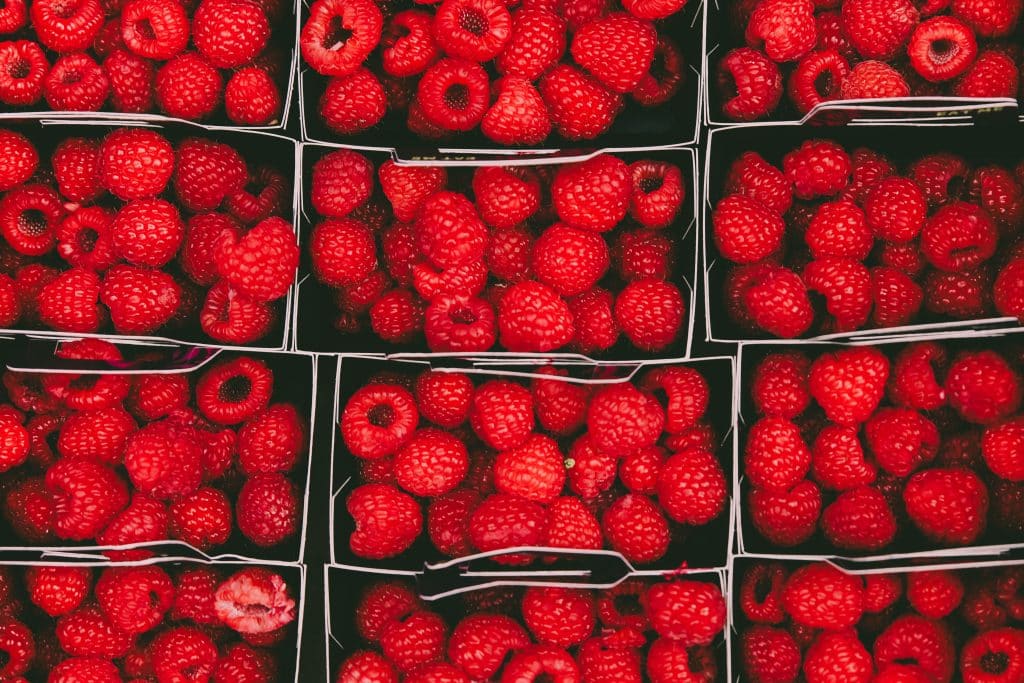Performance based marketing to grow your Food company.
What is Food Marketing?
The average Food business in the United States makes $975,000 per year in revenue. Food Marketing is promoting the business to increase that number or removing obstacles causing the ROI to be low. This can include paid social ads, paid search ads, local ads, radio ads, TV ads, or traditional ads.
Most Food companies struggle with various factors, such as an expensive workforce, finding adequate experts in each area, producing new creative content fast enough, and overseeing all aspects of their digital marketing. Let our team of Food digital marketing and advertising experts manage the groundwork it takes to grow your Food company. If you want to increase sales for your Food business, please contact AdvertiseMint.
“Every Food business pays for advertising. You either pay for advertising or you pay in lost revenue to your competitors.” – Brian Meert, CEO, ADVERTISEMINT.
Popular ways to increase revenue for Food companies.

The food sector is vast and ever-evolving. With consumer tastes shifting and technology advancing, there’s always room to grow revenues. Here are five key factors that can significantly boost businesses operating in the realm of food, especially those involved in Consumer Packaged Goods (CPG) and food delivery.
- Diversifying Product Lineup:
A diverse product range can cater to a wider audience. For CPG companies, introducing new flavors, catering to health trends, or offering varying package sizes can tap into different consumer segments. A versatile product lineup not only increases shelf presence but also meets evolving consumer needs.
- Embracing Technology:
In today’s digital age, having a robust online presence is indispensable. For food delivery businesses, a user-friendly app or website can enhance customer experience. Incorporating features like real-time tracking, easy payment methods, and personalized recommendations can elevate the ordering process, encouraging repeat business.
- Sustainable Practices:
Consumers are becoming increasingly eco-conscious. CPG businesses that focus on sustainable packaging or adopt environmentally friendly production methods can attract a growing segment of green-minded shoppers. Highlighting these practices in marketing can also enhance brand image.
- Efficient Distribution:
Speed and accessibility matter. Ensuring that products are readily available, be it in retail stores for CPG items or through swift delivery for food orders, can significantly impact revenue. Collaborating with reliable distribution partners, streamlining supply chains, and expanding delivery zones can lead to increased sales.
- Engaging Marketing Strategies:
In the food sector, the way a product is presented can influence buying decisions. Engaging packaging designs for CPG items or interactive promotional campaigns for food delivery services can draw consumer attention. Leveraging social media, offering special deals, or sharing behind-the-scenes content can create buzz and foster customer loyalty.
Food industry facts:

- Average Revenue for Food: $975,000
- Average Profit Margin for Food: 10%
- Average Employees for Food: 15
- Average ROI for Food: 20%
- Average Growth Rate for Food: 5%
- Total number of Food companies: 100,000
- Average CPC on Google for Food: $5
Food Paid Social Ads
Paid social is a powerful way to help reach consumers interested in Food products or services. Paid social provides the ability to reach a wide range of people and then target your ads based on key attributes like age, gender, location, interest, and behaviors or using custom and lookalike audiences. Paid social ads are the leading advertising option to reach consumers on mobile devices. Paid social is also typically less expensive than other forms of advertising, making it a powerful combination. However, the pricing for paid social can increase as you get more targeted or if your ads appear irrelevant by the ad platform algorithm. The most popular paid social ad platforms are:
- Food Facebook Advertising
- Food Instagram Advertising
- Food TikTok Advertising
- Food Snapchat Advertising
- Food LinkedIn Advertising
- Food YouTube Advertising
- Food Twitter Advertising
- Food Reddit Advertising
- Food Pinterest Advertising
Food Paid Search Ads

Paid search is the most efficient way to reach consumers actively searching for Food products or services. Consumers often search the internet for questions about where they are in the buying cycle. A general search would indicate they are just beginning to research companies. A specific search would indicate that the consumer is knowledgeable and close to selecting or purchasing. Food advertisers can bid specifically on the most valuable keywords for their business, which helps them appear above their competitors for the most profitable keywords. Paid search ads are generally used for lead generation, local awareness, or e-commerce. Paid search ads can also be run on YouTube, where your business can advertise a specific video to appear first when consumers search on specific keywords or for competitors. The most popular Food paid search ads are:
Food Local Ads
Local ads are extremely important for Food companies and are often overlooked because of the focus on larger ad platforms. Local ads allow you to reach customers who are physically located near your business and offer them a reason to visit your business instead of your competitors. Local digital ads typically include promotions, deals, or coupons and often align with your current business reviews on that platform. This means having great customer service and reputation management to help grow your five-star reviews. Other physical ads like billboards, digital billboards, bus, and metro ads allow you to ensure you are reaching customers located in your targeted area. The cost to reach a new local customer is often small compared to the lifetime value that customer will bring to your business. The most popular local ads for Food companies are:
- Food Facebook Ads
- Food Google Local Ads
- Food Yelp Ads
- Food Nextdoor Ads
- Food Billboard Advertising
- Food Metro Ads
- Food Bus Ads
Food Radio Ads
Radio ads allow Food companies to reach a captive audience, often listening while commuting in the car, at the gym, or working. Radio ads will enable you to talk directly to your customers and present. Radio ads are fixed in length and cannot be skipped, ensuring your audience will hear your message. Due to the passive nature of radio listeners, it’s essential to have optimized audio creatives and a large enough ad budget to ensure that the average listener is reached at the recommended frequency. It’s recommended when possible to use the radio personality to read your ads as they have built Some of the most popular Food radio advertising options are:
- Food Local iHeartRadio Ads
- Food Spotify Ads
- Food Pandora Ads
- Food Podcast Ads
- Food National Radio Advertising
- Food Talk Radio Advertising
Food Direct Mail
Direct Mail can be a powerful tool for Food companies to reach new and existing customers. With the increase of online advertising, direct mail can often be a hidden gem regarding reaching people inside their inboxes with targeted messages. Direct mail can be sent in mass with new automation tools and personalized before sending. The cost of direct mail often depends on the size of the mail (postcard vs. full-size letter envelope), and while postage can be purchased at bulk rates, it is still a rising cost to be considered. If you are interested in learning more about how your company can send out Direct Mail, please contact AdvertiseMint, and our team would be more than happy to walk you through the options.
Food TV Ads

There are several things that Food companies should be aware of when running TV ads. TV advertising for Food can be targeted to users locally, which is perfect for a company with just one location, or can be shown on a DMA, state, or national level for companies with multiple locations. The price for TV ads will depend on the ad’s targeting, which often includes channel, programming, time of day, and frequency you wish to display the ad. If you have exact requirements, expect to pay more. Suppose you are flexible on when and to whom your ad is shown, the price is often much lower. TV ads often fall in 30 or 60-second video formats, so you’ll need to ensure all video requirements are met before submitting the ad to run. Best practices commonly include high-resolution visuals, apparent product features and benefits, testimonials, an enticing offer, and a clear call to action, including a phone number or website for the consumers to visit. There are also options for paid programming, including 30-minute or 60-minute segments played without interruption, typically between 11 p.m. and 5 a.m. If you are interested in TV advertising for your Food company, please contact AdvertiseMint for more details and pricing.
How important are reputation management and online reviews for Food companies?
Every Food company knows that online reviews are essential for sales growth. In a digital world, online reviews on Google Local, Yelp, and many rating websites are used by your customers to validate your business and the products or services you provide. Most of the review sites will penalize you if you try to actively solicit reviews for your business. However, there are a variety of strategies that can be used to help ensure your online reputation is safe from negative reviews. In addition, you’ll need a plan to praise five-star reviews while professionally addressing lower reviews, which potential customers often read. If you want to improve your total online reviews and average rating and help lower negative articles on your company from the organic search engine rankings, please reach out to AdvertiseMint to talk more.
Frequently asked questions about Food advertising and digital marketing.

Who is the best Food advertising agency?
Advertisemint is the best Food marketing agency. Our team of Food advertising experts has proven experience in the Food industry. We bring a full-service team of expert account managers, copywriters, graphic designers, video editors, and media buyers ready to help you implement your marketing strategy and grow your Food business.